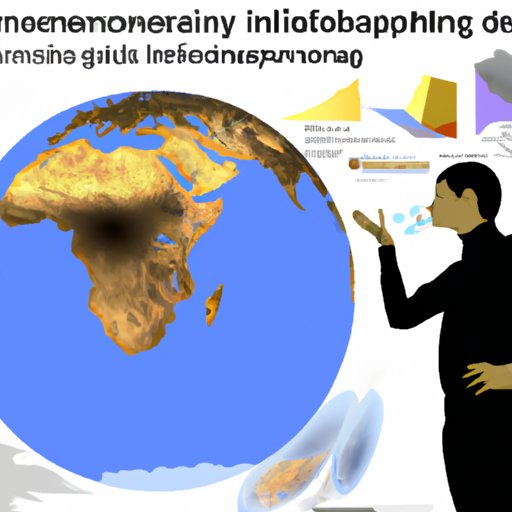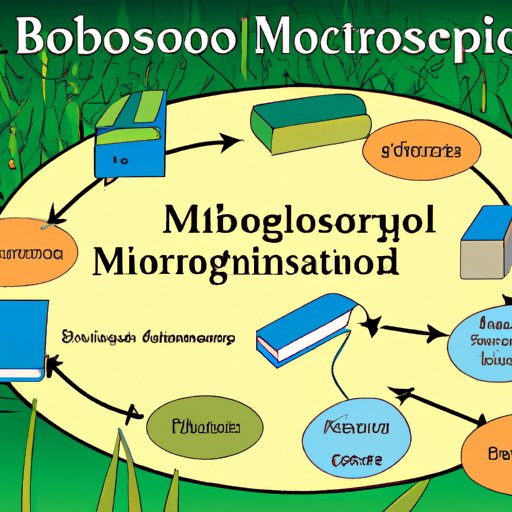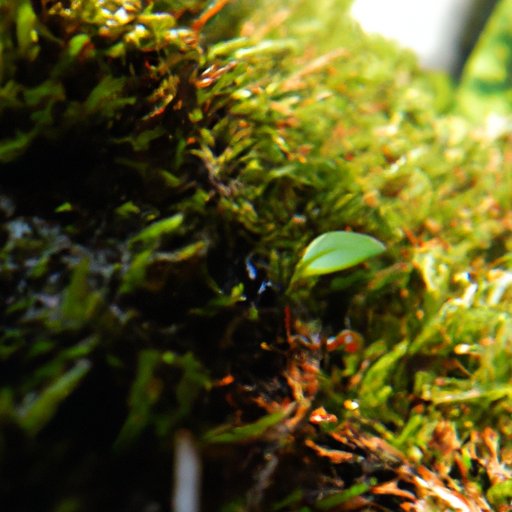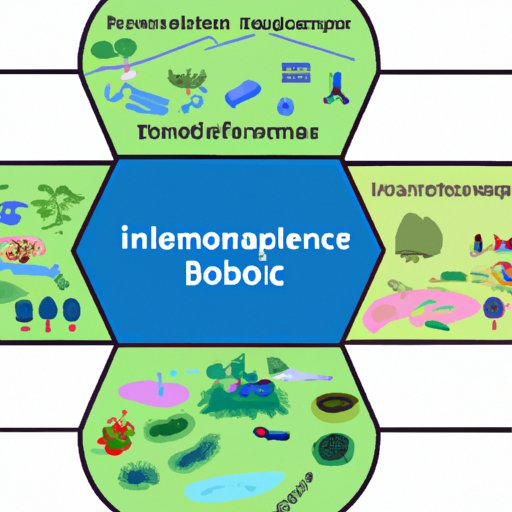Introduction
The biosphere is a term used to describe the interconnected web of life that exists on Earth. The biosphere is made up of all living organisms, from microscopic bacteria to giant sequoia trees, as well as the physical environment in which they live. Understanding the biosphere is essential for understanding the complex dynamics of life on our planet. In this article, we’ll explore what a biosphere is and how it works.
Exploring the Components of a Biosphere: A Scientific Overview
A biome is defined as a large geographic area with distinct climatic conditions and distinct communities of plants and animals. Examples of biomes include deserts, grasslands, forests, and wetlands. Each biome is composed of a variety of habitats, which are home to many different species of plants and animals. For example, a desert biome might contain a variety of habitats such as sand dunes, dry riverbeds, and oases.
Biodiversity is the variety and abundance of species within an ecosystem. Biodiversity is essential for the health of an ecosystem and can be measured by the number of species present, the genetic diversity within those species, and the number of different habitats present. High levels of biodiversity are associated with higher levels of productivity, stability, and resilience in an ecosystem. According to a study conducted by the National Center for Ecological Analysis and Synthesis, “high levels of biodiversity are critical for the maintenance of ecosystem functions and services.”

Investigating the Impact of Human Activity on the Global Biosphere
Humans have had a significant impact on the global biosphere. Human activities such as deforestation, overfishing, and pollution have caused drastic changes in the composition of species, the structure of habitats, and the functioning of entire ecosystems. These changes have had serious consequences for both humans and other species.
For example, deforestation has contributed to habitat loss, species extinction, and soil erosion, all of which can have far-reaching impacts on the environment. Overfishing, meanwhile, has led to the depletion of fish populations, resulting in decreased food availability for other species and reduced economic opportunities for humans.

Understanding the Role of Microorganisms in the Biosphere
Microorganisms are tiny organisms, usually too small to be seen without a microscope. They include bacteria, fungi, archaea, and protists. Microorganisms play a vital role in the biosphere, serving as decomposers, nutrient recyclers, and producers of essential nutrients. They are also important for keeping ecosystems in balance by controlling populations of other organisms.
For example, bacteria help break down dead organic matter, releasing essential nutrients into the soil. Fungi form symbiotic relationships with plants, providing them with essential nutrients in exchange for sugars. And protists can act as both predators and prey, providing food for larger organisms while also consuming them.

The Interdependence of Life Within the Biosphere
The biosphere is a complex network of interdependent species. In an ecosystem, each species plays a unique role in the functioning of the system. This is known as the food web, which is a diagram that shows the feeding relationships between species in an ecosystem. Predators and prey interact to keep populations in balance, while producers provide energy for the entire system.
For example, in a grassland ecosystem, producers such as grasses and other plants provide food for grazers like deer and rabbits. These grazers, in turn, are consumed by predators such as hawks and foxes. This relationship ensures that the populations of both predators and prey remain in balance.
Examining the Effects of Global Climate Change on the Biosphere
Global climate change is one of the most pressing issues facing humanity today. It is having a profound effect on the biosphere, altering the composition of species, the structure of habitats, and the functioning of entire ecosystems. For example, rising temperatures and changing rainfall patterns can lead to desertification, making it difficult for certain species to survive.
In addition, climate change can cause sea levels to rise, leading to the destruction of coastal habitats. As these habitats disappear, so do the species that depend on them. Warmer temperatures can also cause changes in the range of species, as some species may not be able to adapt quickly enough to the new conditions.
Analyzing the Function of Ecosystems Within the Biosphere
An ecosystem is defined as a community of interacting organisms and their physical environment. Ecosystems can be divided into two main categories: terrestrial (land-based) and aquatic (water-based). Each type of ecosystem has its own unique set of characteristics, such as the types of species present, the amount of sunlight received, and the amount of water available.
Ecosystems are essential for the functioning of the biosphere. They provide habitats for species, regulate the flow of energy and nutrients, and help maintain the balance of nature. For example, coral reefs are essential for the health of marine ecosystems, providing shelter and food for a variety of species.
Conclusion
The biosphere is a complex and dynamic system made up of interconnected components. It includes biomes, biodiversity, microorganisms, and ecosystems, all of which are essential for the functioning of the biosphere. Human activity and global climate change are having a major impact on the biosphere, altering the composition of species, the structure of habitats, and the functioning of entire ecosystems. Understanding the biosphere is essential for understanding the complex dynamics of life on our planet.
References
National Center for Ecological Analysis and Synthesis. (2016). Biodiversity and Ecosystem Services. Retrieved from https://www.nceas.ucsb.edu/globalchange/biodiversity.
United Nations Environment Programme. (n.d.). Climate Change Impacts. Retrieved from https://www.unenvironment.org/explore-topics/climate-change/what-are-impacts-climate-change.
(Note: Is this article not meeting your expectations? Do you have knowledge or insights to share? Unlock new opportunities and expand your reach by joining our authors team. Click Registration to join us and share your expertise with our readers.)
